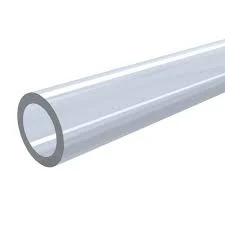Dec . 29, 2024 22:35 Back to list
Benefits of Using HDPE for Durable Cutting Boards in the Kitchen
The Benefits of HDPE Cutting Boards
When it comes to kitchen essentials, cutting boards are often overlooked, yet they play a crucial role in food preparation. Among various materials available, High-Density Polyethylene (HDPE) has emerged as a preferred choice for both home cooks and professional chefs. With its unique properties, HDPE cutting boards offer benefits that enhance food safety, durability, and usability.
What is HDPE?
High-Density Polyethylene is a thermoplastic polymer, widely recognized for its strength, lightweight nature, and resistance to impact and chemicals. HDPE is utilized in a multitude of applications, from grocery bags to pipes, but its qualities make it particularly suitable for cutting boards.
Food Safety
One of the primary advantages of HDPE cutting boards is their safety in food preparation. Unlike wooden boards, which can harbor bacteria in their porous surfaces, HDPE has a non-porous surface that minimizes the growth of harmful bacteria. This is crucial for preventing cross-contamination, especially when dealing with raw meats and other potentially hazardous food. Additionally, HDPE cutting boards are dishwasher safe, allowing for thorough cleaning at high temperatures that are effective for sanitization.
Durability and Longevity
HDPE cutting boards are incredibly durable, designed to withstand the rigors of daily use. They resist deep scratches and cuts better than wood or softer plastic materials, which helps to maintain a smooth surface that won’t dull knives over time. The inherent toughness of HDPE means that with proper maintenance, these cutting boards can last for many years, providing excellent value for money. Moreover, they won’t warp or crack, even under high-temperature conditions or exposure to moisture.
hdpe cutting board material

Lightweight and Easy to Handle
Another practical feature of HDPE cutting boards is their lightweight nature. Chefs often need to transfer ingredients from one place to another, and the portability of HDPE boards makes this task easy. Additionally, many HDPE cutting boards come with convenient features such as built-in handles or juice grooves, enhancing functionality during meal preparation.
Versatility
HDPE cutting boards are versatile in their usage. Available in various colors and sizes, they can be designated for different types of food, reducing the risk of cross-contamination. Many kitchens employ a color-coded system where each color signifies a specific food type, such as red for meat, green for vegetables, and yellow for poultry. This not only promotes food safety but also aids in adherence to health guidelines in professional kitchens.
Environmentally Friendly Options
In recent years, there has been increased awareness regarding environmental impact, and HDPE stands up to scrutiny. It is recyclable, meaning that at the end of its life cycle, it can be transformed into new products rather than ending up in a landfill. Choosing HDPE cutting boards is a step towards more sustainable kitchen practices, appealing to environmentally conscious consumers.
Conclusion
In summary, HDPE cutting boards offer a host of benefits that make them an excellent choice for anyone serious about cooking. From promoting food safety and ease of cleaning to providing durability and versatility, they cater to the needs of both amateur cooks and culinary professionals. When selecting a cutting board, considering HDPE not only ensures efficiency in the kitchen but also contributes to a healthier cooking environment. Whether you’re prepping vegetables, slicing meat, or presenting a charcuterie board, the right cutting board can make all the difference.
-
PVC Grey Sheet for Extraction: Chemical Resistant & Durable
NewsAug.19,2025
-
Durable PVC Pipe Fittings for Plumbing & Irrigation Needs
NewsAug.18,2025
-
HDPE Steel Belt Reinforced Spiral Corrugated Pipe | High Strength
NewsAug.17,2025
-
HDPE Pipe Fittings: Durable, Leak-Proof Solutions
NewsAug.16,2025
-
Premium CPVC Sheet: High-Temp & Chemical Resistant Solutions
NewsAug.15,2025
-
Durable PPR Pipe for Hot & Cold Water Systems - Easy Install
NewsAug.14,2025

